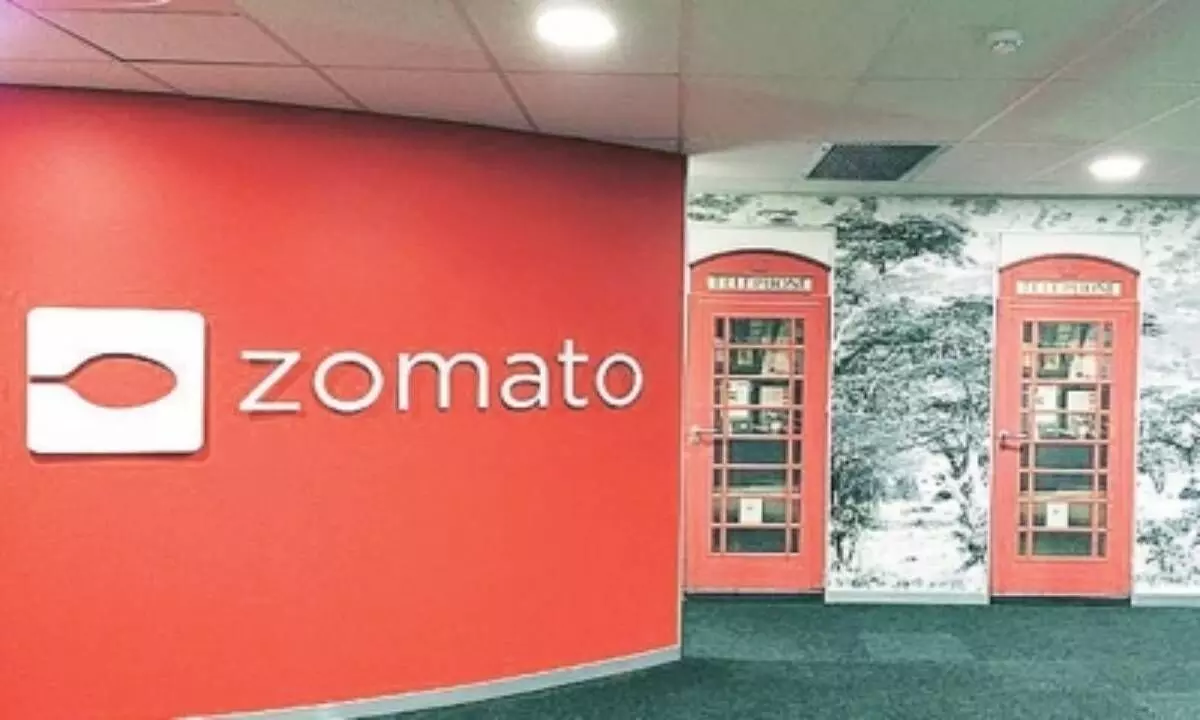Why Zomato is desperate to acquire Rs 4,447cr Blinkit?
Food delivery giant Zomato has officially announced the acquisition of grocery-delivery start-up Blinkit. The transaction has been in the making for several months. The Rs 4,447 crore all-stock deal is expected to power Zomato’s quick commerce play where its rival Swiggy has taken huge strides in building out a large business vertical.
image for illustrative purpose

Food delivery giant Zomato has officially announced the acquisition of grocery-delivery start-up Blinkit. The transaction has been in the making for several months. The Rs 4,447 crore all-stock deal is expected to power Zomato's quick commerce play where its rival Swiggy has taken huge strides in building out a large business vertical.
"Quick commerce has been our stated strategic priority since the last one year," Zomato's founder and CEO Deepinder Goyal said in a blog post announcing the deal. He says quick commerce's close synergies with Zomato's core food business give the company the right to win in the long term.
Before going into the rationales behind this acquisition, here are some quick facts:
In May, Blinkit did a gross order value (GOV) of Rs 402.8 crore, which is about one-fifth of Zomato's monthly average food delivery GOV in Q4FY22. Blinkit recorded 79 lakh orders in May with an average order value of Rs 509. It had 2.3 lakh customers transacting on the platform in May. Blinkit's contribution margin came in at -16 per cent of GOV in May.
Goyal along with Zomato's CFO Akshant Goyal explained in detail the drivers of the acquisition and the synergies that both companies would achieve.
Quick commerce is a natural extension of the food delivery business because it is also a hyperlocal business and it also caters to a need for quick delivery of products for customers. "Quick commerce will help us increase the customer wallet share spent on our platform and also drive higher frequency and engagement from our customers," he said. Akshant said quick commerce will help the company increase its addressable market, the potential profit pool and also make its business more defensible. Food delivery is always a two-peak business—lunch peak and dinner peak. Low utilisation of riders in the mornings and evenings tear a massive hole through unit-level profitability. Express delivery of groceries can address this issue to an extent. "The peak demand times for food delivery are also complementary to the quick commerce demand peaks in non-meal times. This will help increase our hyperlocal delivery fleet utilisation and reduce the cost of delivery," Akshant said.
They addressed the key question – Do customers really need grocery delivery in 15-20 minutes? With a set of unique data points, Zomato said the macro trend indicates that people are moving to unplanned and spontaneous purchases. Compared to next-day delivery, 15-20 minutes delivery witnessed 2.4x growth in average weekly conversion (app open to order ratio percentage), 1.6x jump in average weekly new user retention, and 1.5x increase in average weekly order frequency. In addition, monthly order frequency on the Blinkit app was 3.5x in May 2022, which is higher than that of food delivery on Zomato.
The market size and product categories for quick commerce are ever-expanding. "Grocery is the hook for quick commerce, but it is not just about grocery. Quick commerce naturally extends across multiple categories including beauty & personal care, electronics, OTC pharma, stationery, other gift items, etc. Categories other than grocery help the quick commerce business make higher margins, and attain higher AOVs," Goyal said. Blinkit focuses on the top 15 cities currently.
Why did Zomato choose the inorganic route for quick commerce rather than building it internally? The Gurugram-based company had attempted to build a grocery vertical internally twice but failed. Akshant said 'speed' and 'team' were the two big drivers behind choosing to do this inorganically.
"Blinkit's proprietary tech platform, scale of business, relationships with third-party brands and sellers, and the warehouse and dark store network made it a compelling choice for us to buy vs building it in-house. It would have cost us a significant amount of time (and therefore disproportionate intangible cost) to build this in-house," he said. He also added that Blinkit team has extensive experience in building a significant business while Zomato would have to weaken the quality of the talent pool of its food delivery business to build grocery delivery of this scale internally.
Goyal said the company expects AOVs and ad sales revenue in quick commerce to be higher than food delivery while the last-mile delivery cost will be lower than food delivery given the shorter delivery time.
"Success in quick commerce is heavily dependent on an efficient hyperlocal delivery network. Zomato has a natural advantage here given the millions of food orders that we deliver. That said, hyperlocal delivery alone cannot drive success in quick commerce. That's where Blinkit comes in with its deep understanding of product-supply chains that involve warehousing, movement of goods from warehouses to dark stores, monitoring inventory stored in various locations, optimising picking and packing of orders, among others. Blinkit's proprietary tech stack, tailored for supply chain operations is the backbone of its operations. Blinkit also has rich experience in merchandising and facilitating relationships with a host of brands and third-party suppliers, which reduces our time to market," Goyal said.

